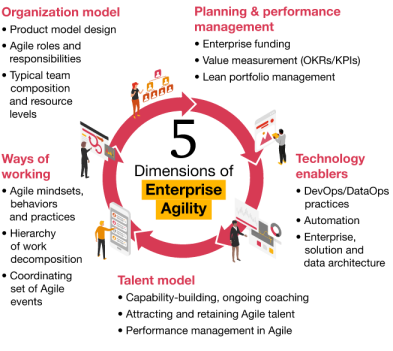Articles

Emotional Culture in Company
Corporate culture is often seen as cognitive culture: the shared intellectual values, norms, and assumptions that guide a group's performance. It influences how employees think and act, affecting their focus on customer service, innovation, teamwork, or competitiveness.
However, cognitive culture is just one aspect. Equally crucial is the group's emotional culture: the collective emotions and expressions that are appropriate or discouraged at work. While cognitive culture is usually communicated verbally, emotional culture is often conveyed nonverbally through body language and facial expressions.
Despite increasing research on how emotions impact workplace behavior, emotional culture is not as deliberately managed as cognitive culture. This oversight can harm companies. For example, a lack of compassion in health care, unchecked anger in teams, or recklessness in security firms can arise from a poorly managed emotional culture. This becomes even more critical during organizational changes or economic challenges
(Created by GPT 4:0)
To effectively manage an organization's emotional culture, it's essential to align the principles outlined in mission statements with the subtle, everyday interactions within the company. These 'micromoments' often involve small, meaningful gestures rather than grand emotional expressions. Consistent acts of kindness, for instance, can cultivate a culture of care and compassion.
Research highlights the impact of nonverbal cues like facial expressions and body language in shaping emotional culture. For example, a manager's habitual angry expression, intentional or not, can foster an environment of anger. A study by Don Gibson, dean and professor of management at Fairfield University, reveals a surprising trend in professional settings: anger is expressed three times more frequently than joy. This preference for expressing anger over positive emotions can significantly influence the workplace atmosphere.
Research on emotional contagion reveals that emotions in a workplace are 'contagious.' For example, if you consistently enter a room with a smile and high energy, you're likely to foster a culture of joy. Employees will naturally mirror this positivity, making it a genuine part of the workplace atmosphere.
The physical environment of an organization also plays a role in shaping emotional culture. For instance, a tech startup's coworking space, adorned with fun posters and drones, reflects a culture of joy and creativity. In contrast, the quiet, tense atmosphere of an intensive care unit in a hospital might foster a culture of fear, though this can be balanced with elements of compassion, like a 'kudos' board for employees.
(created by GPT 4.0)
However, negative emotions can also spread quickly. Regular expressions of frustration can infect the entire team, eventually creating a culture of frustration. It's crucial to consciously model the emotions you want in your company.
(Source: HBR)
Employees can contribute to a positive emotional culture even if they don't initially feel the desired emotion. Social psychology shows that people often conform to group norms of emotional expression. This strategic display of emotion, known as 'surface acting,' can promote group cohesion, but it's not a long-term solution as it may lead to burnout.
A more sustainable approach is 'deep acting,' where individuals actively try to feel a certain emotion. For instance, a manager might transform initial panic into genuine concern for an employee facing a family emergency. This authentic demonstration of emotion strengthens the emotional culture.
Ultimately, the goal is for employees to genuinely embrace the organization's emotional culture. If the culture feels inauthentic, an employee might be better suited to a different department or even a different organization. A strong, sincere emotional culture not only benefits the individuals but also reinforces the overall values and success of the company.
Source:
Groysberg, B., Lee, J., Jesse, P., & Cheng, J. Y.-J. (2020). The Leader’s Guide to Corporate Culture. In HBR’s 10 Must Reads on Building a Great Culture (pp. 7–29). Harvard Business Review Press.
Barsade, S., & O’Neill, O. A. (2016, January 1). ManageYourEmotionalCulture. Harvard Business Review. https://hbr.org/2016/01/manage-your-emotional-culture
Other Article

Corporate culture in context of strategy and leading the company
Strategy and culture are key tools for leaders to keep their organizations effective and viable. By: Martina Švecová

List of the articles sorted by issues
Corporate culture in context of strategy and leading the company By: Martina Švecová Eight distinct cultural styles By: Martina Švecová

Agile as a way of thinking and part of corporate culture
One of the core principles of the Agile way of thinking is adaptability. By: John Melek and Sama Khafaga

 Add Statement
Add Statement
 Authorization
Authorization
